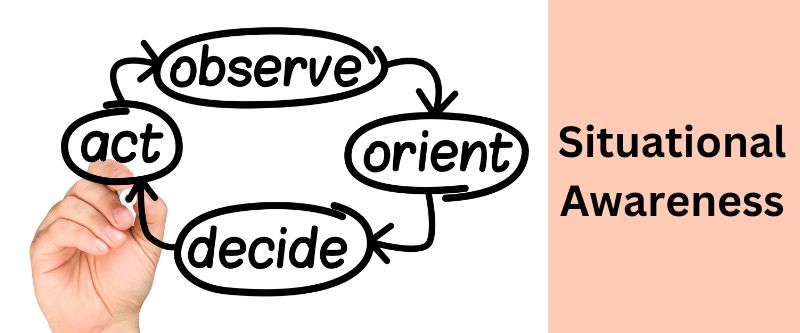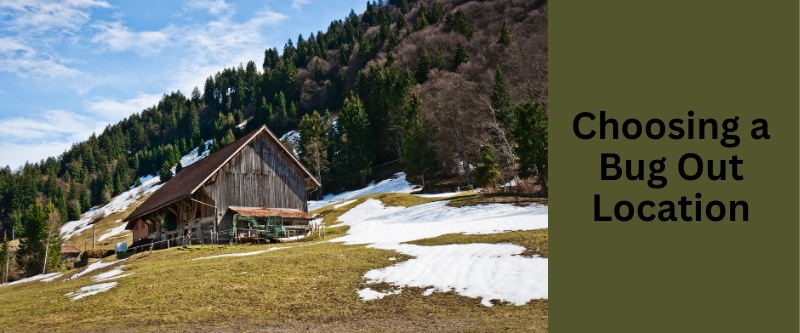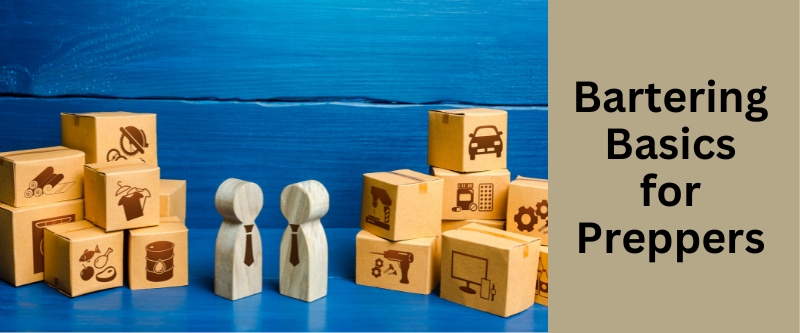Table of Contents
Introduction
In the unpredictable world of prepping, survivalism, and even everyday life, one’s ability to keenly observe, assess, and react to one’sr surroundings can mean the difference between life and death. Situational awareness, in this context, isn’t just about being alert—it’s about understanding the environment, predicting potential threats, and making informed decisions swiftly.
Situational awareness is often likened to having a “sixth sense.” It’s an innate ability to perceive, understand, and predict events in one’s environment. For the prepper, this skill is honed not just through intuition but also through deliberate practice and knowledge.
Levels of Awareness: White to Red
In the world of personal defense and situational awareness, experts often refer to different “colors” or levels of awareness. These colors represent a spectrum, from being completely unaware at one end to being ready to take immediate actionon the other. Understanding and recognizing these levels can help individuals gauge their current state of alertness and adjust accordingly.
White – Unaware
- Characteristics: In this state, an individual is relaxed and unaware of their surroundings. They’re not expecting any threats and are often engrossed in their thoughts or activities. In other words, they are oblivious. And unfortunately, this is increasingly the case in public settings.
- Risks: Being in condition white in public places can make one vulnerable. It’s the state one might be in at home, relaxed, but it’s not ideal for public spaces.
If you look around, you will see people completely disengaged from their surroundings, and instead visually engrossed in their smartphones. Or they will be audibly insulated from the world around them by the music in their ear buds.
You should never be on the streets in a white state. You are a sitting duck for the crimminal, who has been observing you and waiting for the right moment to attack.
The lesson is that you cannot take evasive or defensive action if you are unaware of the threat.
Yellow – Relaxed Alertness
Perception (Level 1Alertness): This is the basic level where you’re actively noticing things around you. It’s the act of scanning your environment for anomalies or potential threats. For instance, spotting a group of individuals acting suspiciously in a usually quiet alley or noticing a car that’s been trailing you for an unusually long time.
- Characteristics: Here, an individual is aware of their surroundings but not expecting any specific threats. They’re observant but relaxed.
- Benefits: This is the ideal state to be in most of the time. It allows one to enjoy life while still being alert to potential dangers.
Orange – Specific Alert
Comprehension (Level 2 Alertness): Once you’ve perceived a potential threat, the next step is understanding its implications. Why is that group in the alley? Why is that car following you? This level involves piecing together the information you’ve gathered to form a coherent picture.
- Characteristics: In condition orange, an individual has identified something of interest that may or may not turn out to be a threat. Their focus narrows to this specific thing or person.
- Actions: If the potential threat becomes an actual threat, the individual is prepared to take action. If it turns out to be benign, they return to condition yellow.
Red – Ready to Act
Projection (Level 3 Alertness): This is the predictive stage. Based on your understanding, you anticipate what might happen next. If those individuals approach you, what might their intentions be? If that car continues to follow, where could you divert to seek safety?
- Characteristics: In this state, the threat has been identified, and the individual is ready to take immediate action, whether it’s to flee, defend, or confront.
- Mindset: Being in condition red requires a clear mind and decisive action. There’s no room for doubt or hesitation.
For preppers and survivalists, understanding these levels of awareness is crucial. It’s not about being paranoid but about being prepared. By training oneself to fluctuate between yellow and orange in public settings, one can ensure they’re never caught off guard. Remember, the goal is not just to see but to observe, not just to hear but to listen.
Honing Situational Awareness Skills
Being street-wise means more than just understanding the basics of situational awareness. It’s about honing those skills, practicing them regularly, and integrating them into your daily life. Here’s how you can enhance your situational awareness:
Stay Informed
- Local News and Updates: Regularly check local news sources. Being aware of recent incidents or trends in your area can give you a heads-up on potential threats.
- Community Networks: Engage with community groups or neighborhood watches. They can be a valuable source of localized information.
Limit Distractions
- Stay Off the Phone: When walking in public places, resist the urge to check your phone constantly. It makes you an easy target and reduces your awareness of your surroundings. SO redirect your curiosity to your surroundings. It will keep you safe.
- Limit Headphone Use: If you must listen to music, keep the volume low or use only one earbud.
Practice Active Observation
- People Watching: Spend time in public places like parks or cafes and practice observing people. Try to guess their intentions, moods, or even what they might do next.
- Play Memory Games: After leaving a place, try to recall specific details about it. How many people were there? What were they wearing? Any unusual behaviors?
Trust Your Gut
- Intuition is Powerful: If something feels off, it probably is. Your subconscious picks up on more than you realize.
- Avoid Confirmation Bias: Don’t just see what you expect or want to see. Be open to unexpected threats or changes in the environment.
The OODA Loop
A Tactical Approach to Situational Awareness
The OODA Loop, where OODA stands for Observe, Orient, Decide, and Act, is a decision-making process originally developed by military strategist John Boyd. It’s a cycle that emphasizes rapid decision-making in fluid situations, making it particularly relevant for street-wise situational awareness.
Observe
- Gather Information: Use all your senses. What do you see, hear, or even smell? Are there sudden changes in the environment, like a group of people running or an unexpected loud noise?
- Constant Vigilance: Regularly scan your surroundings. Don’t fixate on one point for too long.
Orient
- Understand the Context: Relate what you’re observing to your knowledge and experiences. For instance, if you see someone wearing a heavy coat on a hot day, it might strike you as odd.
- Identify Anomalies: Look for things that don’t fit the pattern or the norm. Anomalies often provide the first hint of a potential threat.
Decide
- Evaluate Options: Based on your observation and orientation, what are your possible courses of action? Do you confront, evade, or seek help?
- Prioritize Safety: Always choose the option that maximizes your safety and the safety of those around you.
Act
- Be Decisive: Once you’ve made a decision, act on it swiftly. Hesitation can sometimes escalate a situation.
- Stay Adaptive: If the situation changes, be ready to adjust your actions accordingly. The OODA Loop is a cycle, so you might find yourself going back to the “Observe” stage even after you’ve acted.
For survivalists and preppers, the OODA Loop offers a structured approach to situational awareness. It’s not just about being aware; it’s about understanding, deciding, and acting in a way that ensures your safety and well-being in dynamic environments.
The SLAM Technique
Stop, Look, Assess, Manage
The SLAM technique is another tactical approach that emphasizes proactive thinking and action. While the OODA Loop focuses on rapid decision-making in fluid situations, SLAM is about taking a moment to ensure you’re making safe choices, especially in unfamiliar or potentially hazardous environments.
Stop
- Pause Before Proceeding: Before entering a new area or situation, take a moment to stop. This simple act can prevent you from walking into a potentially dangerous situation unprepared.
- Control Impulses: In our fast-paced world, there’s a tendency to rush. By consciously choosing to stop, you’re taking control and not letting the situation dictate your actions.
Look
- 360-Degree Scan: Turn around and look in all directions. What’s behind you can be just as important as what’s in front.
- Identify Exits and Safe Zones: Always know your escape routes. Whether you’re in a building or an open space, identify where you’d go if you needed to get away quickly.
Assess
- Evaluate the Situation: What are the potential threats? Are there any immediate dangers?
- Trust Your Gut: Sometimes, you might feel something’s off even if you can’t pinpoint why. Trusting your instincts is a crucial part of situational awareness.
Manage
- Take Control: If you’ve identified a potential threat, manage the situation. This might mean leaving the area, alerting authorities, or taking other appropriate actions.
- Stay Calm: Panic can cloud judgment. By staying calm, you’re better equipped to make rational decisions.
The SLAM technique is particularly useful for preppers and survivalists because it emphasizes a methodical approach to safety. It’s about being proactive, not reactive. By regularly practicing SLAM, you can train yourself to automatically assess and manage potential threats, ensuring you’re always one step ahead.
Situational Awareness in Different Environments
Different environments present unique challenges when it comes to situational awareness. Whether you’re navigating a bustling city street or a quiet forest trail, understanding the nuances of each setting enhances your safety and decision-making.
Urban Environments
- Crowds: Cities are crowded, making it essential to be aware of pickpockets, sudden movements, or disturbances. Stay alert in packed areas and keep personal belongings secure.
- Traffic: Vehicles, cyclists, and pedestrians all share the urban space. Always be aware of traffic signals, crosswalks, and potential hazards. Be sure to scan your rear view mirrow every few seconds.
- Buildings and Alleys: Tall buildings can create blind spots. Be cautious when turning corners or entering alleys. Look for reflections in windows and listen for echoing footsteps.
- Public Transport: Buses, trains, and subways can be hotspots for potential threats. Stay alert, especially during off-peak hours, and always know your exit.
Rural Environments
- Wildlife: One of the primary concerns in rural areas is wildlife. Understand the local fauna, their habits, and how to react if you encounter them.
- Terrain: Uneven or unfamiliar terrain can pose risks. Always wear appropriate footwear and be cautious of slippery or unstable ground.
- Isolation: Rural areas often mean fewer people, which can be both an advantage and a disadvantage. Always let someone know your whereabouts and estimated return time.
- Weather: In open areas, weather can change rapidly. Be prepared for sudden shifts in temperature, rain, or other conditions.
Transitional Zones
- Definition: Transitional zones are areas where individuals move from one environment to another, such as parking lots, entrances/exits of buildings, or gas stations.
- Vulnerability: These zones can be areas of vulnerability as people are often distracted during transitions. Always be extra vigilant when entering or leaving a transitional zone.
- Lighting: Many transitional zones, like parking garages, might have varying lighting conditions. Your eyes need time to adjust, so pause and scan the area before proceeding.
By understanding the intricacies of different environments, you can tailor your situational awareness strategies accordingly, ensuring that you’re always prepared, no matter where you are.
Enhancing Your Situational Awareness Skills
Just like any other skill, situational awareness can be honed and improved with practice and dedication. Here are some strategies and exercises to enhance your ability to read and react to your surroundings effectively.
Mindfulness and Meditation
- Stay Present: One of the core principles of mindfulness is being present in the moment. By regularly practicing mindfulness, you can train your mind to focus on the here and now, which is crucial for situational awareness.
- Breathing Exercises: Deep breathing can help calm the mind and sharpen focus. In high-stress situations, taking a moment to breathe can provide clarity.
Mindfulness and meditation are also part of Prepper Fitness generally.
Observation Drills
- People Watching: Spend time in a public place, like a park or cafe, and observe people. Try to deduce details about them based on their appearance, behavior, and interactions. This exercise can help sharpen your observation skills.
- Memory Games: After leaving a location, try to recall specific details about the place, the people, and any potential hazards. Over time, this can improve your ability to notice and remember details.
Limit Distractions
- Digital Detox: In today’s digital age, smartphones and other gadgets can be significant distractions. When in public, limit your screen time and stay aware of your surroundings.
- Stay Organized: Knowing where your essentials are, like keys, wallet, or phone, can reduce panic and distraction in emergencies.
Reading
Here are two highly recommended books:
Training and Courses
- Self-defense Classes: Many self-defense courses incorporate situational awareness training. These classes can provide practical techniques and scenarios to enhance your skills.
- Simulation Drills: Participate in or organize drills that simulate various scenarios, from fires to active shooter situations. These drills can provide invaluable experience in assessing and reacting to threats.
By regularly practicing and challenging yourself, you can ensure that your situational awareness skills remain sharp and effective, preparing you for any situation that might arise.
Conclusion
The Power of Situational Awareness in Prepping
In the world of prepping and survivalism, knowledge is power. But beyond the tangible tools and supplies, situational awareness stands as one of the most potent skills a prepper can possess. It’s the bridge between knowledge and action, allowing people to navigate the complexities of their environment with confidence and precision. And, obviously, this is not just for preppers and survivalists.
Street-wise situational awareness isn’t just about spotting potential threats; it’s about understanding the intricate dance of human behavior, recognizing the subtleties of the environment, and making informed decisions that prioritize safety and well-being. It’s a proactive approach, ensuring that preppers are always two steps ahead, ready to adapt, and equipped to face any challenge.
FAQs
Situational Awareness in Prepping
1. What is situational awareness?
Situational awareness is the ability to identify, process, and comprehend critical elements of information about one’s surroundings. It involves understanding what’s happening around you at any given moment and predicting how events might unfold, allowing you to make informed decisions.
2. Why is situational awareness crucial for preppers?
For preppers, situational awareness is essential because it helps in early threat detection, allowing for timely response and evasion. It’s a proactive approach to safety, ensuring that preppers can navigate various scenarios confidently and effectively.
3. How can I improve my situational awareness?
Improving situational awareness involves regular practice. Start by observing your surroundings actively, noting unusual behaviors or situations. Engage in exercises like Kim’s Game or practice the OODA loop and SLAM techniques. Over time, with consistent effort, your ability to read and respond to your environment will enhance.
4. Is situational awareness only about identifying threats?
No, while identifying threats is a significant aspect, situational awareness also involves recognizing opportunities, understanding behavioral cues, and making informed decisions based on the environment’s nuances.
5. How does the OODA loop help in situational awareness?
The OODA loop (Observe, Orient, Decide, Act) is a decision-making process that emphasizes rapid iteration and adaptability. It helps individuals process information quickly, make decisions, and act on them, enhancing their ability to respond to changing scenarios effectively.
6. Can situational awareness be applied in everyday life, outside of prepping?
Absolutely! Situational awareness is beneficial in daily scenarios, from crossing the street safely to navigating crowded places. It’s a skill that, once developed, can be applied in various aspects of life.
7. What’s the difference between situational awareness and paranoia?
While situational awareness involves being alert and informed about one’s surroundings, paranoia is an irrational fear or distrust. Situational awareness is a balanced and objective understanding of the environment, whereas paranoia can lead to unnecessary anxiety and misjudgments.







Leave a Reply